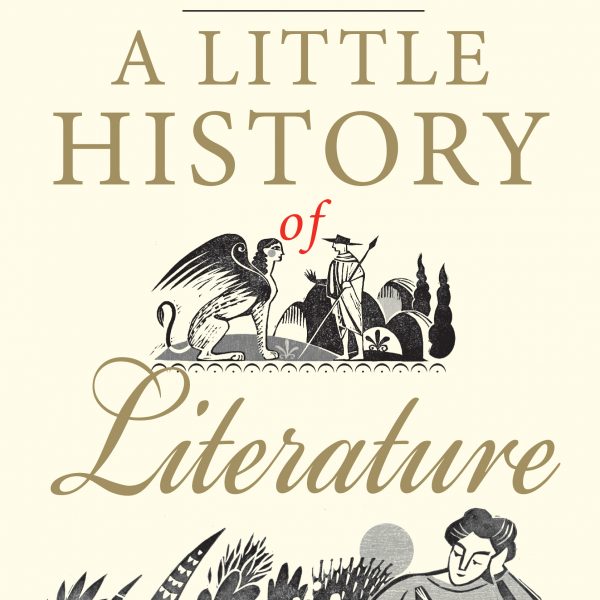Who Says You Can’t Rewrite The History of the World?
Since you’ve been enjoying our contests and Nigel Warburton’s post on how E.H. Gombrich inspired his new book, we thought we’d try one more challenge for our readers, celebrating the new illustrated edition of A Little History of the World. So it’s not a rewrite, per se, (though the book does have a revised preface by Gombrich’s granddaughter, Leonie) but the story told within takes on a new life in this lovely edition.
 Although Gombrich wrote A Little History in 1935-1936, the only one of his books not originally written in English, it did not appear for English audiences until 2005, even though it was a widely translated bestseller in several other languages. Since Yale University Press’s English publication, it has sold over 500,000 copies and now, the volume appears with 200 color illustrations, many of them the famous works that Gombrich, the eminent art historian, would have appreciated and admired himself.
Although Gombrich wrote A Little History in 1935-1936, the only one of his books not originally written in English, it did not appear for English audiences until 2005, even though it was a widely translated bestseller in several other languages. Since Yale University Press’s English publication, it has sold over 500,000 copies and now, the volume appears with 200 color illustrations, many of them the famous works that Gombrich, the eminent art historian, would have appreciated and admired himself.
In forty short chapters, Gombrich tells the story of man from the Stone Age to the atomic bomb, from how people acquired the faculty of speech and learned to make tools to how they waged civil wars and the great global conflicts of the last century. In between, a striking picture emerges of conquests and conflicts, grand works of art, and the spread and limitations of science. The vibrancy of his narrative and colorful language is now matched with the visual imagery; truly a book of all ages, for all ages—it’s perfect bedtime reading for kids and adults to enjoy.
Speed and accuracy will win this quiz! The first person to correctly submit the answers to all the questions below will receive a copy of the new illustrated edition. The next four also-rans (couldn’t resist the pun from the first question) will receive a paperback edition of the book. Send us your answers by Wednesday, October 5 for your chance to win! (Entrants must have a valid mailing address in the US or Canada.)
A Little History of the World Quiz Questions:
1. Who won the Battle of Marathon, for which our foot race is named?
2. What is the name for the Mesopotamian system of writing that involved making wedge-shaped marks on clay tablets?
3. Where did the Babylonian Captivity of the Popes take place from 1305 to 1376?
4. Why did Montezuma allow Cortez to enter Mexico without a fight?
5. Who found enlightenment under a fig tree?




manonmona reblogged this on Espacio de MANON.
1. Who won the Battle of Marathon, for which our foot race is named?
The Greeks defeated the Persians (under Darius I). The foot race is named after this because a myth was forged, in which a messenger ran from Marathon to Athens to announce the success of the Greeks in this battle.
2. What is the name for the Mesopotamian system of writing that involved making wedge-shaped marks on clay tablets?
Cuneiform writing
3. Where did the Babylonian Captivity of the Popes take place from 1305 to 1376?
In Avignon.
4. Why did Montezuma allow Cortez to enter Mexico without a fight?
It is a much complicated question. Cortez was able to enter Mexico without a fight for several reasons, on one hand, he insistently send back and forth emissaries, as a diplomatic move. He was expected in Mexico-Tenochtitlan as part of the costumes of the Aztecs. On the other hand, he marched with a large army constituted from natives of Tlaxcala (enemies and forced tributaries of the Aztecs). And finally there was a myth involved, perhaps a creation of the Spaniards, and that is the idea that Cortez was seen as the returning god Quetzalcoatl.
5. Who found enlightenment under a fig tree?
Buddha, also known as Siddhartha Gautama.